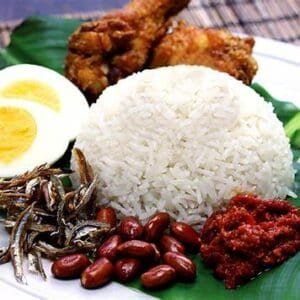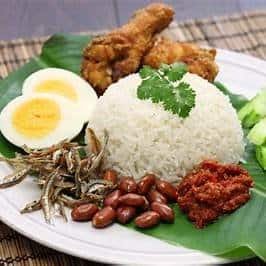Turning Veggie Haters into Little Food Explorers—Fun Meal Ideas
Introduction
Picture this: you lovingly plate colourful broccoli “trees” and carrot “coins,” only to watch your child push them aside with Olympic-level skill. If veggie battles leave you exhausted—and your kitchen floor littered with greens—take heart. Children aren’t born rejecting vegetables; their taste buds simply need coaching and a dash of creativity. This guide reveals why kids say “yuck,” shares playful strategies that turn produce into adventures, and offers an entire week of kid-tested meal ideas. You’ll also learn how CMH Specialist Hospital’s family-nutrition team can personalise solutions when pickiness feels overwhelming. No jargon, no guilt—just practical steps to help little ones explore the garden on their plates.
Why Kids Push Vegetables Away
Natural caution: Humans evolved to distrust bitter flavours (a sign of toxins in prehistoric plants). Many veggies carry mild bitterness, so rejection is self-preservation at work.
Super-sensitive taste buds: Children have roughly double the taste buds adults do, magnifying strong flavours.
Texture turn-offs: Fibrous, crunchy, or mushy textures can feel odd compared with bread or noodles.
Fear of the unfamiliar: Brand-new colours and shapes spark food neophobia—a normal developmental stage between ages two and six.
Understanding these hurdles helps you address the real issue rather than assuming “my kid is just stubborn.”
The Taste-Training Timeline
Exposure is the single biggest predictor of acceptance. Research shows most children need 8–15 neutral tastings before a new veggie moves from “no way” to “okay.” Neutral means no pressure—just seeing, smelling, touching. Celebrate tiny wins: a lick today can lead to a nibble next week.
Fun Strategies to Turn Veggie Haters into Explorers
Make Veggies the Art Supplies
Rainbow rice rolls: Set out rice paper, coloured veggie sticks (purple cabbage, orange carrot, yellow capsicum), and let kids roll their own edible “stained-glass windows.”
Broccoli forest bowls: Serve steamed broccoli upright in mashed-potato “soil.” Provide cherry-tomato “ladybugs” for decoration. Kids are more willing to taste what they design.
Rename for Imagination
Marketing teams do this—why not parents?
“X-Ray Vision Sticks” (carrot batons)
“Power-up Peas”
“Ninja Spinach Wraps”
Labels influence perception; studies show children eat twice as many vegetables with fun names.
Dip Days
Pair unfamiliar veg with familiar flavours:
Greek yogurt + mild curry powder as “sunshine dip”
Peanut butter + dash of honey for apple and celery dunking
Hummus coloured pink with beet purée to spark curiosity
Dipping turns eating into a game of dunk-and-crunch.
Build-a-Bento
Kids love compartments. Fill a divided lunchbox with colourful raw veggies, fruit, cheese cubes, and a small treat. The visual variety reduces veggie intimidation. Include one “safe” food so the meal doesn’t feel like an ultimatum.
Hide and Seek—But Don’t Keep It Secret
Sneaking spinach into smoothies is fine, but tell kids afterward: “That green Hulk smoothie had spinach that helps muscles grow.” Linking taste to identity builds long-term acceptance instead of deceit.
Mix Multiple Textures
Roast cauliflower until crisp on the edges and tender inside. Combine edamame with sweet corn for crunch plus pop. Texture variety keeps bites interesting and offsets any bitter edge.
Theme Nights
Traffic-Light Dinner: Red capsicum strips, yellow corn, green beans.
Under-the-Sea Pasta: Blue-spirulina noodles with zucchini “seaweed” ribbons and fish-shaped carrot slices.
Themes transform supper into storytime.
Kid-Friendly Kitchen Jobs
Giving children ownership skyrockets tasting odds:
Washing cherry tomatoes in a colander (water play bonus)
Tearing lettuce leaves for salad
Using kid-safe knives to cut soft mushrooms
These tasks engage senses before eating begins.
Rewards That Work—And Ones to Skip
Praise bravery, not volume: “Thanks for tasting the bell pepper!” Avoid dessert bribes; they teach that veggies are chores you suffer before the “good stuff.”
Creative Breakfast, Lunch, and Snack Ideas
Morning Marvels
Incredible Hulk Pancakes: Blend baby spinach into whole-meal batter; serve with banana slices.
Sunshine Egg Muffins: Whisk eggs with grated carrot and diced capsicum, bake in muffin tins—freezer-friendly for school mornings.
Lunchbox Wins
Mighty Mac ’n’ Peas: Swap half the macaroni for cauliflower florets; blend cooked pumpkin into cheese sauce for sweetness and colour.
Sushi Burritos: Wrap brown-rice sushi sheets around avocado, cucumber, and shredded beetroot with a soy-yogurt drizzle.
Snack Attacks
Frozen yogurt bark topped with kiwi coins and carrot-juice swirls.
Ants-on-a-Raft: Celery sticks filled with tuna salad topped with raisin “ants.”
Dinner Champions
Pizza Night Remix: Let kids top whole-grain pita rounds with veggie faces—olive eyes, pepper noses, tomato smiles.
Rainbow Fried Rice: Stir-fry leftover rice with edamame, carrots, corn, and red cabbage. Use low-sodium soy and sesame oil for flavour punch.
A One-Week “Explorer Plate” Plan
| Day | Meal Idea |
|---|---|
| Monday | Rainbow rice rolls + peanut dipping sauce |
| Tuesday | Sunshine egg muffins + melon cubes |
| Wednesday | Pizza pita faces + carrot “fries” air-fried with paprika |
| Thursday | Under-the-Sea pasta + side salad kids prepped |
| Friday | Hulk smoothies (spinach, banana, cocoa) + cheese toast soldiers |
| Saturday | BBQ veggie skewers + corn-on-the-cob paint-brush station (kids brush with herb butter) |
| Sunday | DIY taco bar: black-bean mince, lettuce, tomato salsa, grated carrot |
Adjust portion sizes by age and appetite; repetition helps reinforce acceptance.
Age-Specific Tips
Toddlers (1–3)
Serve veggies first when hunger is highest.
Offer soft textures: steamed carrot coins, mashed peas.
Keep portions tiny—a tablespoon per year of age.
Preschoolers (4–6)
Use taste-explorer charts: sticker each time they try a new veg.
Introduce gentle herbs (dill, parsley) to expand flavour profiles.
School-Age (7–12)
Incorporate social proof: invite friends for “build-a-wrap” parties.
Teach simple stove skills—stir-frying snow peas builds pride.
Tweens & Teens
Discuss sports performance: show how iron from spinach boosts oxygen for futsal stamina.
Let them plan one veggie-based meal a week and handle the grocery list.
What to Avoid
Pressure and Punishment – links veggies with negative emotion; long-term studies show it reduces vegetable intake in adulthood.
Over-seasoning with Salt or Sugar – masking taste prevents palate training. Use natural flavour enhancers—lemon zest, garlic, herbs—instead.
One-Size-Fits-All Expectations – genetics influence bitterness sensitivity. Respect individual thresholds; aim for gradual improvement, not perfect plates.
When Picky Eating Signals a Bigger Issue
Red flags include:
Consistently rejecting entire food groups beyond age six.
Choking or gagging frequently on textured foods.
Growth faltering on pediatric charts.
Extreme anxiety around mealtimes.
If these appear, book an assessment at CMH Specialist Hospital. Speech therapists, dietitians, and pediatricians collaborate to identify sensory, medical, or behavioural causes and craft targeted therapies.
How CMH Specialist Hospital Helps Families Eat the Rainbow
Personalised Dietitian Consults – phased veggie-introduction plans with kid-friendly recipes.
Taste-Explorer Workshops – hands-on classes where children prep and sample produce in a fun group setting.
Picky-Eater Clinics – multidisciplinary sessions addressing oral-motor delays to ARFID.
School Collaboration – upgrading canteen menus so exposure extends beyond home.
Success Stories
Sara, age 5 – moved from all-white foods to cucumber “mermaid scales” after six weeks.
Hamzah, age 10 – blends spinach into smoothies after linking greens to football endurance.
Frequently Asked Questions
Should I hide veggies or be transparent?
Blend for smoother textures but reveal ingredients—transparency builds trust.
How much is enough?
Malaysian guidelines suggest 2 servings of fruit + 3 servings of vegetables daily for kids (½ cup cooked = 1 serving).
Are frozen vegetables okay?
Yes—flash-frozen at peak nutrition and often cheaper.
What about seasoning cubes?
Many are high in sodium; use onion, garlic, or low-sodium broth instead.
Conclusion
Turning veggie haters into curious food explorers is less about force and more about fun, patience, and repeated exposure. Transform produce into art projects, storybook heroes, and build-your-own meals. Celebrate tiny tastes, respect sensory boundaries, and remember it can take dozens of tries for acceptance to bloom. When challenges persist, CMH Specialist Hospital’s child-nutrition experts stand ready with evidence-based guidance and engaging programs that make vegetables feel like exciting discoveries rather than dreaded chores. Start small tonight—maybe a rainbow rice roll or Hulk pancake—and watch curiosity sprout alongside your child’s growing palate. Soon, those once-ignored greens may become the star players of every family meal.


